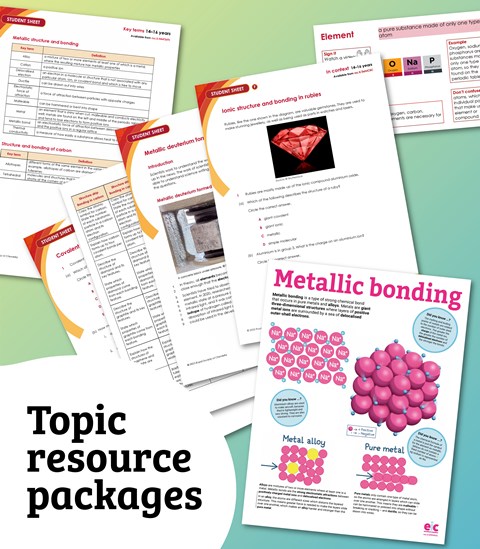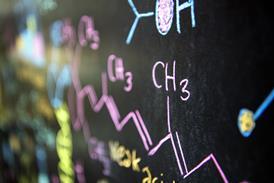All Atoms and bonds articles
-
 Misconceptions
MisconceptionsIonic bonding: true or false? | Chemical misconceptions II
Check your learners’ understanding of ionic bonding with this true or false worksheet
-
 Games and puzzles
Games and puzzlesAtoms, molecules and ions 4-in-a-line
Match the symbol or the particle diagram to the type of particle it represents. Get 4-in-a-line to win!
-
 Resource
ResourceAtoms and isotopes | Developing understanding | 14–16
Encourage learners to deepen their understanding of isotopes from the macroscopic to sub-microscopic level
-
 Extension
ExtensionIonic bonding and electron transfer | Stretch and challenge | 14–16 years
Learners evaluate and discuss ideas about ionic bonding, the formation of ions and energetics
-
 Resource
ResourceDecision tree: what type of bonding? | 14–16 years
Use this decision tree to help your learners find answers to questions about structure and bonding by scaffolding their thinking
-
 Resource
ResourceAtoms and ions of copper | Johnstone’s triangle worksheets | 14–16 years
Use these worksheets to develop learners’ understanding of atoms and ions, including a demonstration of a metal displacement reaction
-
 Lesson plan
Lesson planMetallic bonding and the structure of iron | Lesson plan | 14–16 years
Explore how the bonding in iron relates to its physical properties and address common misconceptions using this lesson plan with activities
-
 Resource
ResourceMetallic bonding | Knowledge check | 14–16
Assess learning on metallic bonding with worksheets at foundation and higher level
-
 Lesson plan
Lesson planBonding bingo: bonds and properties of substances | 14–16 years
Try this game and lesson plan to reinforce learners’ understanding of bonding and how it relates to the physical properties of substances
-
 Extension
ExtensionAtomic structure and the Sun | Stretch and challenge | 14–16
Stretch learners’ understanding of atomic structure using the context of the Sun
-
 Resource
ResourceAtomic structure | Knowledge check | 14–16
Assess learning on atomic structure with a higher and foundation worksheet
-
 Resource
ResourceCovalent structure and bonding | Knowledge check | 14–16
Assess learning on covalent structure and bonding with two levels of worksheet
-
 Resource
ResourceCovalent structure and bonding in our bodies | In context | 14–16
Put covalent bonding into context with questions about the human body, its composition and the nutrition needed to support human health
-
 CPD article
CPD articleHow to teach atomic structure at 14–16
Strengthen your students’ grasp of the atom and electronic configurations with these models and strategies
-
 Resource
ResourceCovalent bonding | Developing understanding | 14–16 years
Develop learners’ understanding of the size and shape of covalent structures by interpreting a range of diagrams and models
-
 Resource
ResourceIonic bonding | Developing understanding | 14–16 years
Develop learners’ understanding of ionic lattices through comparing 2D and 3D representations
-
 Resource
ResourceMetallic bonding | Developing understanding | 14–16
Develop learners’ sub-microscopic understanding by interpreting a range of models used to represent metallic structure and metal ions
-
 Resource
ResourceCarbon allotropes | Developing understanding | 14–16
Encourage learners to think about how different structures of carbon are represented and what this means at the sub-microscopic level
-
 News
NewsHelp learners understand and compare the Bohr and electron cloud models
Make the abstract nature of atomic theory more concrete with these evidence-informed teaching tips
-
 Resource
ResourceDifferent allotropes of carbon | Johnstone’s triangle worksheets | 14–16 years
Use these worksheets to get learners thinking about carbon allotropes at different levels, from sub-microscopic structures to macroscopic properties











